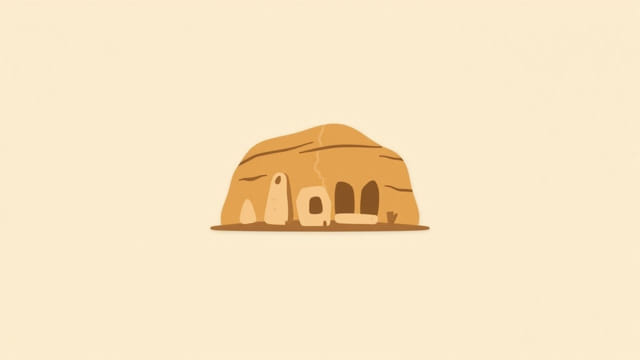The Middle Paleolithic period in India represents a crucial phase in the evolution of early human culture and technology. This era, dated approximately between 300,000 and 30,000 years ago, witnessed significant advancements in tool-making techniques and adaptation to changing environmental conditions. India’s rich archaeological landscape offers a number of important Middle Paleolithic sites that provide valuable insights into the life and habits of early Homo sapiens and possibly other hominins such as Homo heidelbergensis or Neanderthal relatives. These sites are scattered across the subcontinent, revealing a diverse and regionally varied prehistoric presence.
Defining the Middle Paleolithic Period
The Middle Paleolithic is recognized by the emergence of new tool technologies, especially flake-based tools made using the Levallois technique. This period marks a shift from the crude hand-axes of the Lower Paleolithic to more refined and efficient implements such as scrapers, borers, and points. These tools were better suited to hunting, hide processing, and other survival tasks.
In India, the Middle Paleolithic was not a uniform cultural phase. Its characteristics varied regionally, depending on local resources, climate, and geology. Despite this variability, scholars have identified several consistent patterns, including the dominance of flake tools and the use of specific raw materials like quartzite, chert, and basalt.
Key Middle Paleolithic Sites in India
1. Nevasa (Maharashtra)
Nevasa is one of the most important prehistoric sites in western India. Excavations here revealed a well-defined sequence of cultural layers, including a Middle Paleolithic stratum. Numerous flake tools such as side scrapers, denticulates, and notched tools were discovered, indicating a long and sustained occupation by early humans. The site is also notable for its environmental context, with evidence suggesting a riverine ecosystem that may have supported hunting and gathering activities.
2. Bhimbetka Rock Shelters (Madhya Pradesh)
The Bhimbetka rock shelters, a UNESCO World Heritage Site, are among the richest archaeological sites in India. While the site is famous for its Upper Paleolithic and Mesolithic rock art, deeper excavations have revealed Middle Paleolithic tools as well. Quartzite flakes and cores found in the lower layers point to the use of local materials and suggest a continuity of occupation over tens of thousands of years.
3. Didwana (Rajasthan)
Located in the arid region of Rajasthan, Didwana has produced a substantial collection of Middle Paleolithic artifacts. The tools found here include points, scrapers, and blades made primarily from chert and quartzite. The region’s dry climate helped preserve these tools in excellent condition. Didwana’s significance lies in its stratigraphic integrity, allowing researchers to study transitions from earlier periods and into the Upper Paleolithic.
4. Jwalapuram (Andhra Pradesh)
Jwalapuram gained international attention for its association with the Toba super-eruption, which occurred around 74,000 years ago. Excavations at this site revealed a sequence of occupations before and after the volcanic event. Middle Paleolithic tools discovered here suggest a resilient population that adapted to dramatic climatic shifts. The site offers critical evidence supporting the continuity of human habitation despite environmental catastrophes.
5. Attirampakkam (Tamil Nadu)
Attirampakkam is one of the most thoroughly studied prehistoric sites in southern India. Though more famous for its Lower Paleolithic Acheulean tools, Middle Paleolithic layers have also been identified. These include a variety of flake tools made from quartzite, suggesting a transition in tool-making techniques. Radiometric dating at the site indicates a possible overlap between the Middle and Lower Paleolithic, offering insights into cultural evolution in the region.
6. Narmada Valley (Central India)
The Narmada Valley, stretching across central India, contains multiple Middle Paleolithic sites, such as Hathnora and Adamgarh. Tools from this region are typically made from locally available stone and show considerable refinement compared to earlier periods. The Narmada Valley is also notable for yielding a partial hominin skull, often attributed to an archaic human species, which underscores the valley’s paleoanthropological importance.
Characteristics of Middle Paleolithic Tools
Middle Paleolithic tools in India are primarily made using flake techniques. The most common tools include:
- Scrapers Used for processing hides and wood.
- Borers Pointed tools for making holes in materials.
- Points Likely used as spear tips for hunting.
- Denticulates Serrated tools used in cutting plant materials.
The Levallois technique, which involves preparing a core to produce uniformly shaped flakes, is frequently observed. This method represents a cognitive advancement and understanding of geometric planning by early hominins.
Environment and Adaptation
During the Middle Paleolithic, India experienced a range of climatic changes, including glacial and interglacial periods. Early humans had to adapt to different environmental conditions, from riverine forests to arid plains. The toolkits found at various sites suggest flexibility and innovation in dealing with local resources. The continued occupation of these sites through varying climate phases points to the success of these adaptive strategies.
Significance of Middle Paleolithic Sites
Middle Paleolithic sites in India are critical for understanding the evolution of human behavior, migration, and technological development. They bridge the gap between earlier Acheulean cultures and the later microlithic cultures of the Upper Paleolithic and Mesolithic periods. These sites also contribute to global debates about the dispersal of modern humans out of Africa and into South Asia.
Key contributions of Middle Paleolithic studies include:
- Evidence of early symbolic behavior and cognitive development.
- Insights into technological innovation and cultural continuity.
- Understanding human resilience to environmental change, such as volcanic eruptions and glacial events.
The Middle Paleolithic period in India marks a transformative era in prehistory. The sites from this time reveal not only the technical skills of early humans but also their adaptability, endurance, and capacity for innovation. As archaeological techniques advance, more such sites are being discovered, shedding light on the complex and rich human history of the Indian subcontinent. From Bhimbetka to Jwalapuram, these places are silent witnesses to the ancient past, offering a glimpse into the lives of our distant ancestors and the beginnings of human culture.
